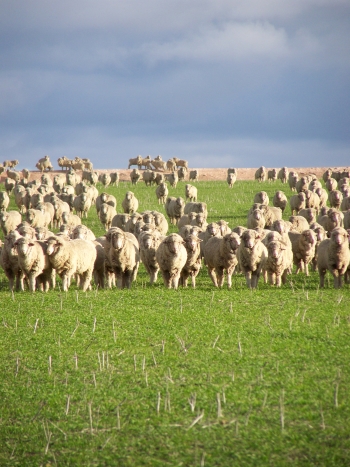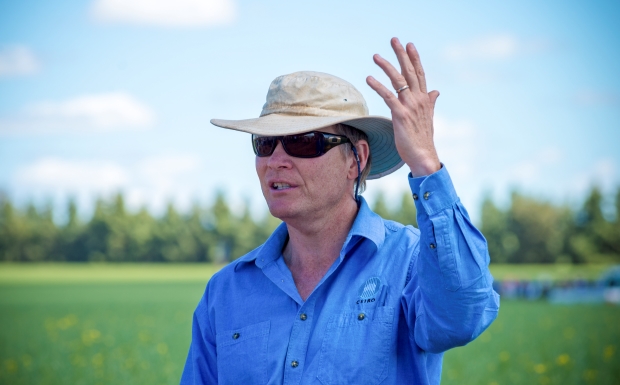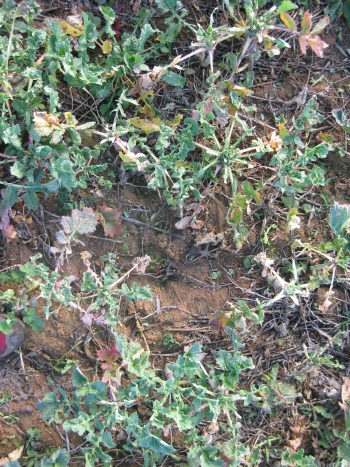Paddock Practices: Grazing management critical to dual-purpose crop profitability
Date: 28 May 2020

The increase in adoption of dual-purpose cropping within southern Australia’s mixed farming systems is little wonder given the myriad of benefits it offers – potential increases in net crop returns by up to $600 per hectare, wider sowing windows, reduced crop height, pasture spelling, a fill for critical feed gaps and flexible exit options to suit seasonal and market conditions.
However, as most growers know, the most productive and profitable dual-purpose crops rely on strict attention to detail with both crop and livestock management.
Given that when seasons allow, the ultimate goal is to maximise profit from the combination of the grazed forage and the grain, it’s important to understand how grain yield is affected by heavier or delayed grazing.
Collaborative research investments by the Grains Research and Development Corporation (GRDC) and the CSIRO have demonstrated that time of lock-up relative to crop stage and residual biomass are the critical issues when it comes to decision making. Residual biomass means the amount of biomass left after grazing.
Grazing windows, lock-up strategies, biomass accumulation and assisting yield recovery have been key topics at GRDC Grains Research Updates in recent years as part of presentations by senior research scientists including CSIRO’s Dr John Kirkegaard and Dr Susie Sprague.
They say grazing windows can be broadly defined into three periods in relation to the impact on grain yield. For example, the crop stages and specific timings in southern NSW are as follows:
- Safe – early, well anchored and still vegetative (completion by mid-July)
- Sensitive – late vegetative stage (mid-July to early August)
- Unsafe – late and reproductive organs elongating above ground (early August onwards).
In other parts of the northern grains region, the stages of plant growth remain the same, however the specific dates change according to crop development.

Grazing windows
The early and `safe’ grazing period begins once the crop is well anchored and there is still plenty of time for recovery after a period of grazing, even if the crop is grazed quite heavily.
The late and `unsafe’ period is when the reproductive parts of the crop (spikes in wheat, or buds in canola) are elongating and can be removed by stock, and there is too little time for the crop to recover enough biomass by flowering to set a reasonable yield potential.
The `sensitive’ period is the period in which the crop has not yet begun to elongate, but where yield recovery can be extremely sensitive to the amount of residual biomass left.
This is the period where some idea of how much residual biomass is needed to reach a specified target grain yield can assist growers with lock-up decisions to avoid yield loss while maximising grazing potential.
Research conducted by the CSIRO demonstrates that the risk of a yield penalty associated with grazing is likely to increase as the grain yield potential increases, because a five tonne per hectare crop requires a higher level of biomass at flowering than a 3t/ha crop according to Dr Kirkegaard.
“As a result, either an earlier lock-up, or more residual biomass at lock-up is required to reach the higher yield target,” he said.
“Decisions to continue grazing at the possible expense of grain yield depend on the yield target and ultimately will be guided by seasonal conditions and relative market prices for grain and livestock.
“This has certainly been relevant in the last couple of years when grain yield potential hasn’t looked promising and it’s been more profitable to continue grazing or cut the crop for hay.
“In these scenarios, residual stubble cover then becomes a critical issue – it’s important not to leave low levels of cover as it can have a significant impact on erosion risk and soil moisture storage over the subsequent summer for the following season’s crop.”
Identifying when to start and stop
Dr Kirkegaard said most growers could easily identify the `safe’ and `unsafe’ periods by testing crop anchorage to start grazing and checking crop development stage to stop grazing.
To establish when crops are anchored, growers can use the pinch and twist test whereby they pinch the top canopy leaves between the thumb and the forefinger and pull upwards while twisting the wrist. If the leaves break off and the plant does not pull out of the ground, the crop is ready for grazing, though growers may choose to allow more biomass to accumulate depending on livestock numbers.
“In cereal crops such as wheat, barley and triticale, stock should be removed no later than GS30 – the beginning of stem elongation – to avoid animals removing the developing spikes and allow time for canopy recovery to fill grains ” Dr Kirkegaard said.
“Canola crops should be grazed during vegetative growth, beginning at the six-to-eight-leaf stage. Stock should be removed before buds elongate more than 50 to 100mm above ground to minimise the delay in flowering and yield losses from defoliation.”
Determining biomass requirement and assisting yield recovery
Yield recovery from grazing during the sensitive period for a given target yield is affected by the residual biomass at lock-up. Late grazing reduces the time for recovery, so more residual biomass is needed.
In wheat crops, it’s an established rule of thumb that each 1t/ha of wheat grain yield needs 1.8t/ha of biomass at flowering. That is, a 3t/ha crop needs around 5.4 t/ha of biomass at flowering.

For canola the residual biomass requirement left after grazing is higher than wheat, due to the inherently heavy and thick stem bases and slower regrowth after grazing.
Spring canola requires about 1.5 t/ha of residual biomass left when locked up at the end of July (when the stems begin to elongate) to ensure 2.5 to 3.0 t/ha yield potential.

Earlier-sown winter canola has even thicker stem bases and requires around 2.5 t/ha of residual biomass for recovery.
Research trials have shown that top-dressing nitrogen (N) after grazing can assist yield recovery in some cases. Dr Kirkegaard said growers should assume that wheat requires 40 kg N/ha for every 1 t/ha of expected yield and canola requires 80 kg N/ha - and adjust topdressing according to existing N and target yield as they would for un-grazed crops.
Additional considerations
When planning a dual-purpose crop, it’s important to consider the application timing, withholding periods and plant-back restrictions of registered pre-emergent and post emergent herbicides and insecticides.
More information on using the growth stages of cereal crops to time herbicide applications and herbicide plant-back periods is available in NSW DPI’s Weed control in winter crops 2020 booklet.
More information
Dr John Kirkegaard, Chief Research Scientist and Farming Systems Team Leader, CSIRO, 0458 354 630, john.kirkegaard@csiro.au
Useful resources
- GRDC Update paper Wire, water and grazing management in dual purpose crops
- GRDC Update paper Maximising system benefits from dual purpose crops – early sowing and grazing strategies
- GRDC Update paper Dual purpose crops – direct and indirect contributions to profit
- GRDC Update paper Management and profitability of dual purpose crops
- GRDC dual purpose crops fact sheet
Contact Details
Contact
Toni Somes, GRDC
0436 622 645
Toni.somes@grdc.com.au
Was this page helpful?
YOUR FEEDBACK
